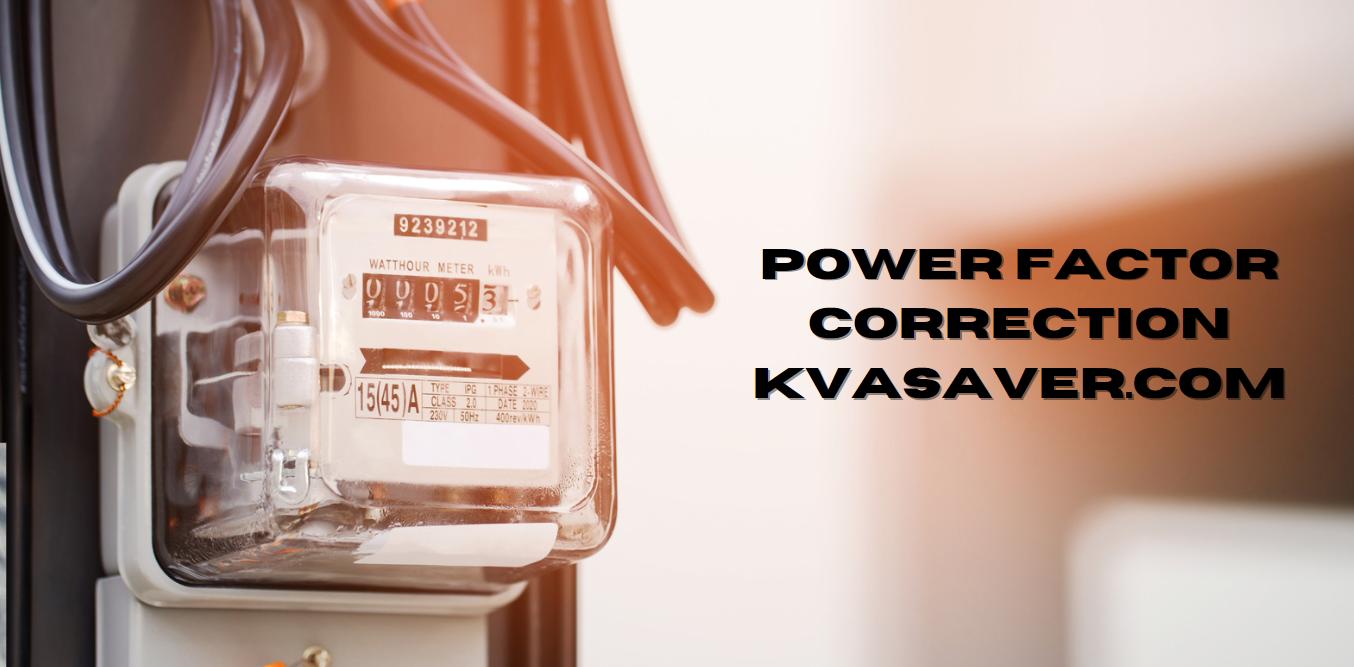Contents
- 1 Introduction to Power Factor Correction
- 2 What is Power Factor Correction?
- 3 Understanding Power Factor Correction kvasaver.com
- 4 Key Benefits of Power Factor Correction
- 5 Technologies for Power Factor Correction
- 6 Implementing Power Factor Correction: A Step-by-Step Guide
- 7 Case Studies: Success Stories with kvasaver.com
- 8 Frequently Asked Questions (FAQs)
- 9 Conclusion
Introduction to Power Factor Correction
Power Factor Correction (PFC) is a critical component of modern electrical systems, designed to improve power usage efficiency. As electrical systems become more complex, maintaining an optimal power factor is essential for reducing energy losses, minimizing utility costs, and enhancing overall system performance. This comprehensive guide will delve into the intricacies of power factor correction, with a specific focus on kvasaver.com, a leading resource for understanding and implementing PFC solutions.
What is Power Factor Correction?
Power Factor Correction is the process of improving the power factor of an electrical system. Power factor is a measure of how effectively electrical power is being converted into useful work output. It is defined as the ratio of real power (measured in watts) to apparent power (measured in volt-amperes). The power factor is expressed as a decimal or percentage, and ideally, it should be close to 1 (or 100%).
Real Power (Watts): The actual power used to perform work in an electrical system.
Apparent Power (Volt-Amperes): The total power supplied to the system, including both the real power and reactive power.
Reactive Power (Volt-Amperes Reactive, VAR): The power that alternates between the source and load, which does no useful work but is necessary for maintaining voltage levels in the system.
A low power factor indicates that a large portion of the apparent power is reactive power, which can lead to inefficient energy use and higher electricity costs. Power factor correction aims to reduce the amount of reactive power and bring the power factor closer to unity, thus enhancing efficiency.
Understanding Power Factor Correction kvasaver.com
kvasaver.com is a valuable resource for those seeking in-depth information and solutions related to power factor correction. This platform provides comprehensive insights into various aspects of PFC, including technologies, benefits, implementation strategies, and case studies. By leveraging the expertise and tools available on kvasaver.com, businesses and individuals can optimize their electrical systems and achieve significant energy savings.
Key Benefits of Power Factor Correction
- Improved Energy Efficiency: By correcting the power factor, you reduce the amount of reactive power in the system, which enhances the efficiency of energy use. This leads to lower electricity consumption and reduced energy costs.
- Reduced Utility Bills: Many utility companies charge penalties for low power factors. Improving your power factor can help avoid these penalties and lower your overall electricity bills.
- Enhanced Equipment Performance: A corrected power factor reduces the load on electrical equipment, leading to improved performance, extended lifespan, and decreased maintenance costs.
- Increased System Capacity: By improving the power factor, you can make better use of the available electrical capacity, potentially avoiding the need for costly system upgrades.
- Environmental Benefits: Reducing energy consumption lowers the demand on power plants, leading to reduced greenhouse gas emissions and a smaller environmental footprint.
Technologies for Power Factor Correction
Several technologies and devices are used to correct power factor in electrical systems. The choice of technology depends on factors such as the type of load, system size, and specific requirements. Some common technologies include:
- Capacitor Banks: Capacitors are used to supply reactive power, thereby reducing the amount of reactive power drawn from the grid. Capacitor banks can be installed at various points in the system to achieve the desired power factor.
- Synchronous Condensers: These are rotating machines that provide reactive power to the system. They are typically used in large industrial applications where precise control of reactive power is required.
- Automatic Power Factor Correction Systems: These systems use automatic controls to adjust the amount of reactive power compensation based on real-time load conditions. They offer flexibility and efficiency for varying load scenarios.
- Static VAR Compensators (SVCs): SVCs use power electronics to provide dynamic reactive power compensation. They are suitable for applications requiring fast response times and high precision.
- Active Power Factor Correction Devices: These devices use advanced electronic circuits to correct power factor and minimize harmonics. They are often used in sensitive electronic equipment and high-power applications.
Implementing Power Factor Correction: A Step-by-Step Guide
- Assessment and Analysis: The first step in implementing power factor correction is to conduct a thorough assessment of your electrical system. This involves measuring the current power factor, identifying sources of reactive power, and analyzing load characteristics.
- Selecting the Right Technology: Based on the assessment, choose the appropriate power factor correction technology. Consider factors such as the type of load, system size, and the need for automatic or manual correction.
- System Design: Design the power factor correction system, including the placement and sizing of capacitors or other devices. Ensure that the system is compatible with existing electrical infrastructure and meets regulatory requirements.
- Installation: Install the power factor correction equipment according to the design specifications. Ensure that all connections are secure and that the system is properly calibrated.
- Monitoring and Maintenance: After installation, monitor the performance of the power factor correction system to ensure it is operating effectively. Regular maintenance and periodic checks are essential to maintain optimal performance and address any issues promptly.
Case Studies: Success Stories with kvasaver.com
Case Study 1: Industrial Facility
An industrial facility with a low power factor faced high electricity costs and frequent equipment issues. By implementing a power factor correction system using capacitor banks and automatic controls, the facility achieved a power factor close to unity, resulting in significant cost savings and improved equipment reliability.
Case Study 2: Commercial Building
A commercial building with fluctuating load conditions struggled with high utility bills and power factor penalties. The installation of an automatic power factor correction system allowed for real-time adjustments, reducing penalties and lowering energy costs.
Frequently Asked Questions (FAQs)
1. What is the ideal power factor for most electrical systems?
The ideal power factor is close to 1 (or 100%). A power factor of 0.9 or higher is generally considered acceptable for most systems.
2. How often should power factor correction systems be maintained?
Regular maintenance is essential for optimal performance. Typically, systems should be inspected and tested at least once a year, with more frequent checks for systems with high usage or critical applications.
3. Can power factor correction reduce my electricity bills?
Yes, improving your power factor can reduce electricity bills by minimizing penalties from utility companies and lowering overall energy consumption.
4. How can I determine if my system needs power factor correction?
Conduct a power factor assessment to measure your current power factor and identify sources of reactive power. If your power factor is significantly below 1, power factor correction may be beneficial.
5. Are there any regulations regarding power factor correction?
Yes, regulations may vary by region and utility provider. It’s important to consult with local regulations and utility requirements to ensure compliance with power factor correction standards.
Conclusion
Power factor correction is a vital aspect of modern electrical systems, offering numerous benefits including improved energy efficiency, reduced utility costs, and enhanced equipment performance. kvasaver.com provides a wealth of resources and solutions to help individuals and businesses achieve optimal power factor correction.
By understanding and implementing the right technologies and strategies, you can enhance the efficiency and reliability of your electrical system, leading to long-term savings and environmental benefits.For more detailed information and practical solutions on power factor correction, visit kvasaver.com.







